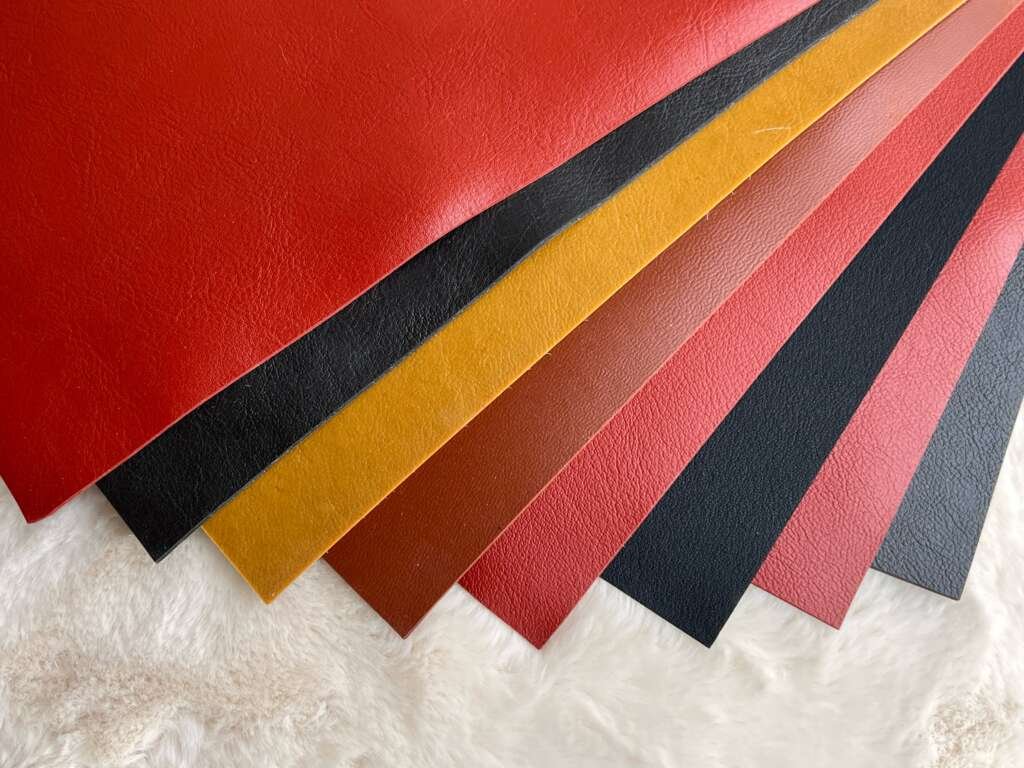What Are Biomaterials? And, How Are They Sustainable?

Share This Article
Stephanie Downs, co-founder of Uncaged Innovations, shares how today’s vegan leather is made better.
We’re all looking for alternatives to be more sustainable and improve our environmental impact- i.e reduce CO2 emissions, water waste, and plastic pollution. A lot of those ways involve simply choosing better or more natural alternatives. But, beyond the standard swaps such as choosing organic cotton instead of virgin polyester clothing, there’s no denying that technological innovations will play a key role in helping us to improve our environmental impact in the future. For instance, take a look at leather and vegan leather. For years fashion, home goods, and various other industries have grappled with finding leather alternatives that aren’t petroleum-based plastics that contribute to fossil fuel pollution. But, now companies like Uncaged Innovations are tackling these problems by focusing on developing and producing innovative, sustainable leather alternatives that rely more on plants than fossil fuels.
What Does Apple Leather Feel Like?
Click to read more…
CEO and Co-Founder of Uncaged Innovations, Stephanie Downs, launched the New York-based next-gen leather biomaterials company to solve the environmental issues of vegan leather by offering alternatives that move away from plastics. If you’re unfamiliar with the term biomaterials, there’s a good reason for that. Traditionally, biomaterials referred to synthetic or natural materials used in “medical applications to support, enhance, or replace damaged tissue or a biological function.” Think implants or regenerative medicine. It was in the late 1960s that the term first popped up in the fashion lexicon when the German-based company, Presstoff, made an alternative leather from paper pulp. Flash forward to the 2020s, and biomaterials are often used to refer to a range of plant-based materials- kelp, mycelium, cacti, apple skins, etc.- that can be used in place of traditional leather and, most importantly, virgin plastics.
Everything You Need To Know About Vegan Leather Made From Pineapples
Click to read more…
This transition away from plastics makes biomaterials a key for leather alternatives. A May 2019 report from the Center for International and Environmental Law examined a few key areas of plastics’ impact on our environment; they aren’t pretty. It begins with oil and gas- the building blocks of plastics. Transporting them emits 12.5 to 13.5 million tons of CO2 yearly. Then, refining those natural resources into plastics emits the equivalent of what 45 million cars would emit in one year. And, when we’re done with our plastic products and toss them into the trash, incinerating them emits an additional 5.9 million tons of CO2. These statistics show a small impact that plastic products have on our environment while not even taking into account waster waste or deforestation. So, having the opportunity to have exquisite leather-like products that are also developed in a way that is less taxing and pollutive on our environment is a great sustainable alternative to what has traditionally been offered to us.
Having spent a decade serving as a Corporate Social Responsibility Consultant, Stephanie has sat at the helm of several innovative and plant-based companies. Speaking more on how biomaterials impact factors as sustainable alternatives to traditional leather, Stephanie offers her insight into the next-gen material.

What are bio-leathers?
Uncaged Innovations is a company that produces bio-leather using sustainable and plant-based materials, such as agricultural byproducts, natural rubber, and algae extract. Our bio-leather is a type of leather made without animal hides and is, therefore, more environmentally friendly and ethical. We use plant-based materials to reduce the fashion industry’s environmental impact and promote sustainable fashion. Our bio-leather is also designed to be high-quality, durable, and visually appealing, making it a viable alternative to traditional leather.
How can bio-leathers help reduce carbon emissions and water waste?
Our bio-leather’s raw materials and production process are designed to reduce carbon emissions and water waste. Specifically, our company uses a unique blend of plant-based materials to create leather-like materials without the environmental impact of traditional animal leather production. Using plant-based materials, our bio-leather can eliminate the carbon emissions associated with livestock farming, meat processing, and the water waste from tanning animal hides.

Why is traditional leather so bad for the environment?
Traditional leather production has a significant environmental impact for a few key reasons. First, raising livestock, particularly cattle, requires many resources, such as land, water, and feed, which contribute to greenhouse gas emissions and can negatively impact local ecosystems.
Additionally, the animal agriculture industry is a significant contributor to deforestation, particularly in regions like the Amazon rainforest, where land is cleared for grazing and feed production. Second, tanning animal hides to create leather is resource-intensive and can generate significant pollution. Tanning typically involves harsh chemicals, which can harm human health and the environment if not handled properly. The tanning process also requires a significant amount of water, which can lead to water waste and contamination if not treated and managed appropriately.
Finally, the disposal of animal leather waste can also have negative environmental impacts. The production of leather generates significant amounts of solid waste, such as leftover animal parts, and can result in water pollution if not properly disposed of or treated. Overall, the environmental impact of traditional leather production is significant, and alternatives like our bio-leather that use more sustainable raw materials and production processes can help reduce these adverse effects.
